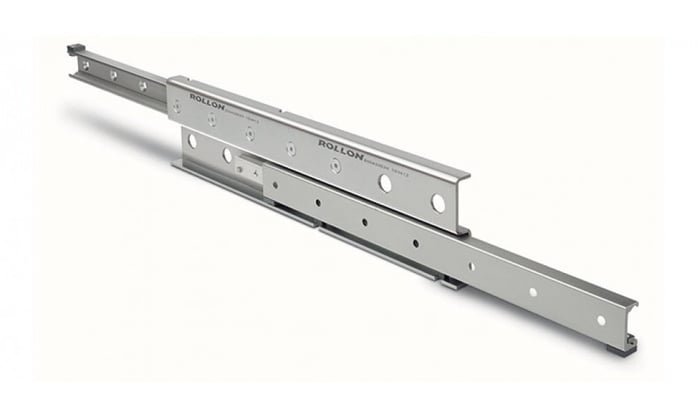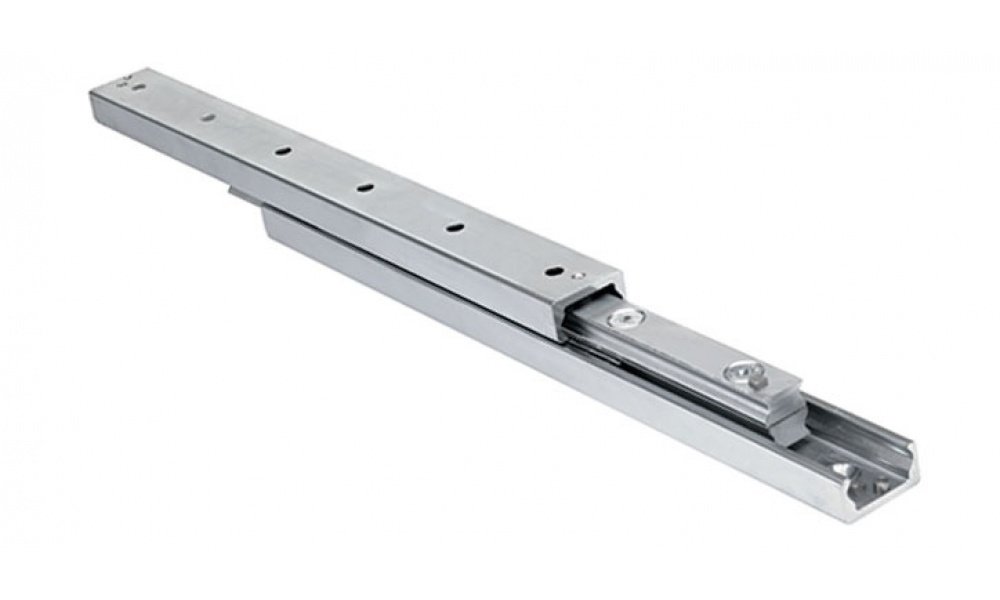As you probably know, telescopic rails are an essential component for carrying high loads at full extension in applications such as industrial warehouses and medical imaging systems. At Rollon, we offer several robust options with hardened raceways that minimize deflection under heavy loads.
Our DEV or DSS lines are a natural starting point for these types of applications since they deliver at least 100% stroke compared to their closed length. In other words, a foot-long rail will provide at least one foot of stroke, allowing a foot-long linear slide to pull out.
However, if the apparatus that’s holding the slide is deeper than the slide itself, our ASN series is your best bet.

Advantages
While the DEV or DSS rail may be easier to incorporate into your design, our ASN telescopic rails have plenty of advantages for high load applications. Some technical features include:
- A maximum operating speed of 0.8 m/s
- A temperature range of -20 to 170°C
- Optional increased anticorrosive protection
- A Maximum stroke of 1,013 mm
- A Maximum rail length of 1,970 mm
- A Maximum dynamic load capacity of 61,688 N
A less expensive option
With a simple, compact design for high load capacities, the ASN series of partially-extended telescopic rails comes with a guide rail and slider made of cold-drawn carbon steel. These rails, which cost about half the price of DEV or DSS, accept radial and axial loads and moments in all directions. When mounted to a structure, ASN rails create a highly rigid system.
Even though the ASN family of rails only allows 50% stroke, they’re capable of telescoping in two directions. So if your mounting space is deeper than the slide, you can use an ASN rail and still have the slide fully pull out. To figure out if you have enough mounting space for an ASN, simply multiply the depth of the slide by 1.5.


